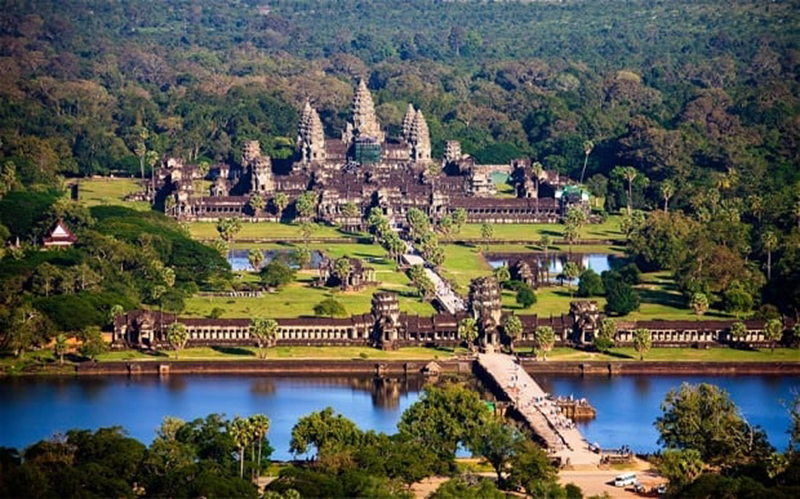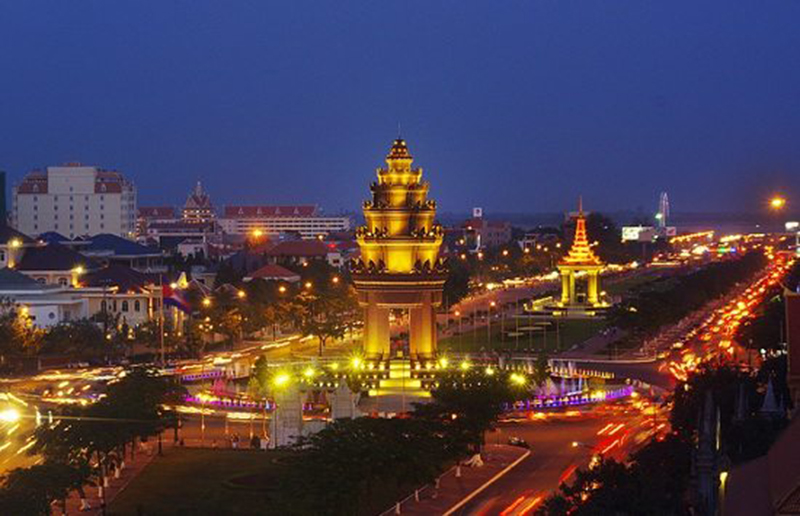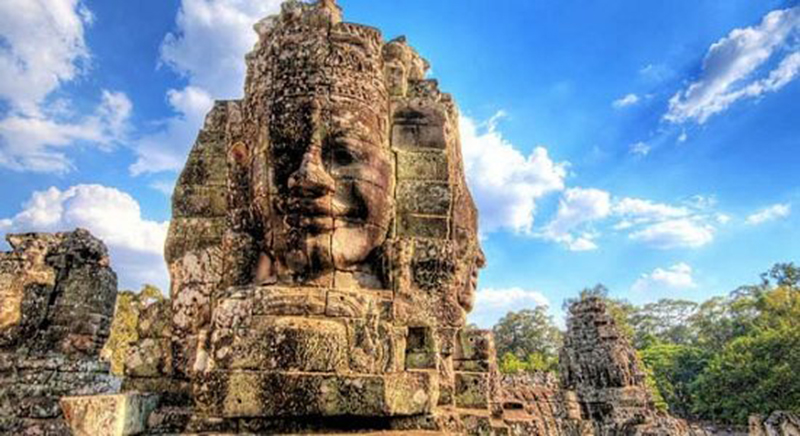HOME/CAMBODIA
Cambodia
Full name: Kingdom of Cambodia
Capital: Phnom Penh
Official language: Khmer
Government: Unitary parliamentary elective constitutional monarchy
National Day: 9 November
Currency: Riel ( KHR)
Geography & Demography
Cambodia has an area of 181,035 square kilometres (69,898 square miles) and lies entirely within the tropics, between latitudes 10° and 15°N, and longitudes 102° and 108°E. It borders Thailand to the north and west, Laos to the northeast, and Vietnam to the east and southeast. It has a 443-kilometre (275-mile) coastline along the Gulf of Thailand.
Cambodia’s landscape is characterised by a low-lying central plain that is surrounded by uplands and low mountains and includes the Tonle Sap (Great Lake) and the upper reaches of the Mekong River delta. Extending outward from this central region are transitional plains, thinly forested and rising to elevations of about 650 feet (200 metres) above sea level. Borders: Laos and Cambodia to the east, the Gulf of Thailand and Malaysia to the south, the Andaman Sea and Burma to the west.
Population: 16.7million (2017)
The vast majority of Cambodia’s population is of ethnic Khmer origin (over 95%) who are speakers of the Khmer language, the country’s sole official language. Cambodia’s population is largely homogeneous. Its minority groups include Chams (1.2%), Vietnamese (0.1%) and Chinese (0.1%.
Cambodia’s climate, like that of the rest of Southeast Asia, is dominated by monsoons, which are known as tropical wet and dry because of the distinctly marked seasonal differences.
Cambodia has a temperature range from 21 to 35 °C (70 to 95 °F) and experiences tropical monsoons. Southwest monsoons blow inland bringing moisture-laden winds from the Gulf of Thailand and Indian Ocean from May to October. The northeast monsoon ushers in the dry season, which lasts from November to April. The country experiences the heaviest precipitation from September to October with the driest period occurring from January to February.






